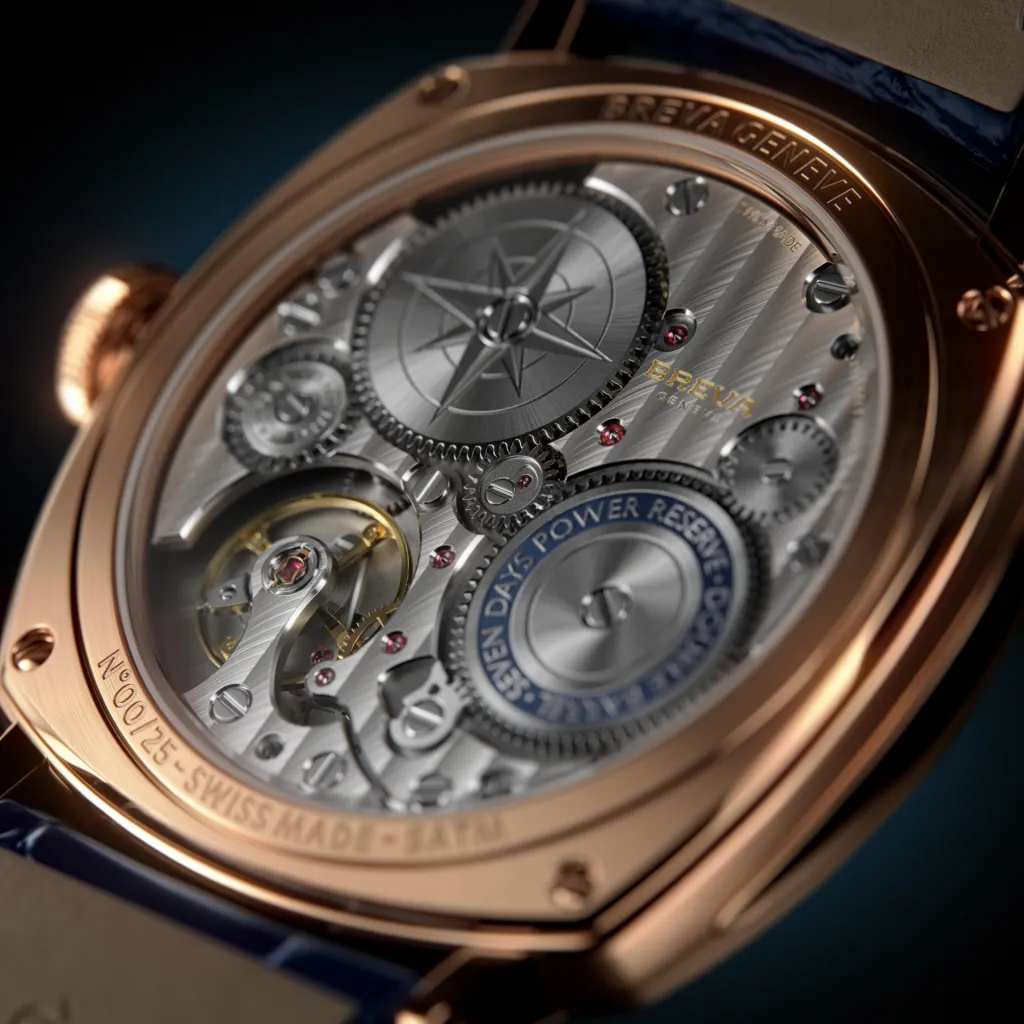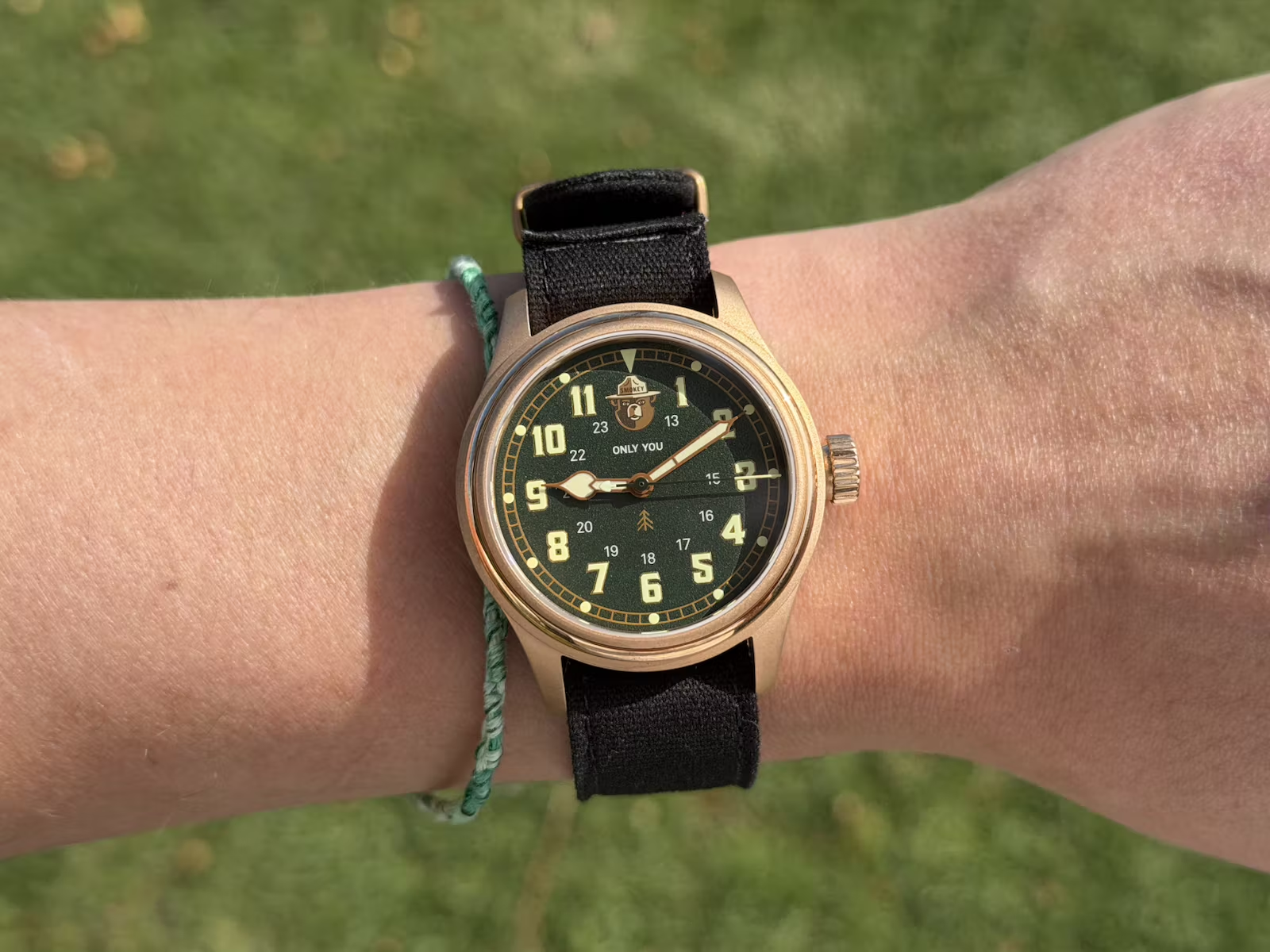
Guilloché Dials And A Watch In A Bottle - Exploring The Andersen Geneve Jumping Hours
There are a few brands out there that I find really strange.
There are a few brands out there that I find really strange.
Not strange because there is anything wrong with them. The opposite, actually.
These brands are doing incredible things, but are flying under the radar. All the attention going instead to the more established, hype-driven manufactures instead. Why?
I’ll use mandarin varieties to explain.
Ok, You’ve got your bog-standard Clementine, a perfectly fine choice if you’re in need of some citrus. Some would say it’s the Rolex/Patek Philippe of the mandarin world. Highly versatile, common, albeit not available for half the year. If you’re just starting out with Mandarins, it’s a fine choice. If a bit obvious.
The problem is that we’ve all tried to peel a clementine, and it can sometimes leave a bitter taste in the mouth.
But fear not, there’s an alternative. A better citrus treat that not only tantalises the taste buds but is easier to peel too.
Yes, the Sumo mandarin or “dekopon” as it’s known in its native Japan is the philosophical comparison I’m using to open this article. Although not many people know about the Sumo. It’s better in every way. It even has a top knot on it’s head. I’ll leave you to do the googling, I’m not putting a picture of a mandarine on my prestigious watch blog….
Anyway, the Sumo is the spiritual sister to a brand that deserves more attention, not only for its sweetness but for its history and aesthetics too.
Alright, alright. Enough citrus talk (www.thecitrusdial.com?).
Let’s talk about Anderson Geneve.
A watch in a bottle.
When I was a kid, I had a ship in a bottle and I loved it.
Who knew my passion for watches and things inside other things would eventually come together. Funny how life works out.

In 1969, Svend Andersen created the world's first bottle clock. His motivations for doing so have eluded me, but, nonetheless, it was an impressive technical achievement. So much so that Andersen garnered the nickname “Watchmaker of the impossible”.
He even got the attention of Patek Philippe and ended up working with them in their grand complications department.
This early proclivity to technical challenge has no doubt influenced Andersen's desire to push boundaries throughout the years.
Are you even a watchmaker if you can’t put a clock together inside a bottle?

At 81 years old, Svend is still highly involved in the company, working daily to assist in training the team on high end watchmaking, developing unique pieces and assisting in after sales. If I have as much energy as Mr Andersen in my 80's i'll be doing alright!
In 2015, Pierre-Alexandre Aeschlimann purchased the brand and took over as managing director. After being at the helm for the development of multiple GPHG winning watches, I feel that Anderson Geneve is in very good hands indeed.
The Jumping Hour by Andersen Geneve
Patented in 1883 by Josef Pallweber, who may or may not have been the first to invent the complication. The Jumping Hour display has seldom been produced by mainstream brands. IWC aside, of course.

Andersen Geneve has been mastering this complication for decades. As it turns out, when you work at something for that long, you get pretty good at it. The Jumping hours is a wonderfully simple looking watch, but in true Svend style, It’s all about the details.
The Movement
Commissioned in 1995, Svend’s Jumping Hours module was first paired with a minute repeater (boss) and then developed further for other brands. One watch to note that used a modified version of the module is the “Jour & Nuit” calibre from Cartier. Meaning “Day & Night” in French, the jumping mechanism was modified to present a split time display. Retrograde minutes at the bottom and a rotating disc indication at the top displaying the hours.


Staying true to his nickname of “watchmaker of the impossible”, Svend developed his module to precisely control the realese of energy at the top of every hour. All while staying synchronised with the gear train driving the minutes display. It’s complicated stuff, but when it’s done right, the hour ticks over at the perfect moment.
Svend’s module is paired with the Frédéric Piguet 11.50. A Swiss made, ultra-thin movement that also powers many Blancpain watches. What I find interesting is that it’s rated to 72 hours of power reserve in this case when paired with the module, but in other watches it’s 100 hours. I’m thinking it’s the extra power required to activate the cams and store the energy for the jump of the hours.

Winding of the movement is courtesy of a 18ct gold rotor with a “hand guilloché grain d’orge” pattern on its surface. And for those of you wondering at home, “grain d’orge” translates to Barley Grain. Anyone for a beer?
The Dial
One of the benefits of having the hours displayed digitally is that it removes the need to have a central pinion to hang an hour hand off. Leaving more room in the centre of the dial to show off how good you are at decoration. And Andersen Geneve are excellent at it.


At 12oclock, the jumping digits sit beautifully in an aperture that tapers slightly towards the bottom. The visual balance here is exceptional. Unlike other jumping hours mechanisms, all numerals are printed on a single disc, so even the single digit hours are centred in the window.
The finishing of the dial is where this watch really stands out. And although you can request any dial decoration you want, their latest piece is outstanding.
The Rising Sun Edition, my personal favourite, has a solid rose gold dial with a “magic losange” pattern hand engraved into its surface. This process takes five days to complete and involves three different vintage engine turning machines.
The Case
Brushed on its sides and mirror polished on the bezel, the case is simple but elegant. One detail I just love is where the lugs meet the case. The edges are rounded to give it just a touch of softness. This is done separately, and each part is welded on, post-finishing.

Flip the watch over, and you’re greeted with the view of a movement that is just a little too small for the case. They could have done the easy thing here and settled for an out of proportion case back (Patek 5524G….) but they did something brilliant.
Around the edge of the movement, they placed a blue gold ring that fills out the space under the crystal. Visually, this ties everything together and give enough space to engrave.
Master stroke from Svend and his team.


As I get to the end of this article, I’m starting to realise that I haven’t mentioned anything negative about Andersen Geneve or The Jumping Hours. You know, for journalistic integrity.
But to be honest, I don’t really have anything.
I could go on to say that I wish it had an in-house movement, but I just don’t.
It wouldn’t have increased its appeal to me in the slightest. Plus, it would just make it more expensive.
Of course, this is all subjective, and I am by no means an authority on the subject of independent watches. But my sense is that people are sleeping on Svend and his Jumping Hours.
Just like they are sleeping on the Sumo Mandarin.
Follow Andersen Geneve on Instagram HERE and check out their website HERE
Cya in the next one. x
.avif)


This story was created in partnership with our good friends at .

.avif)
.webp)
.png)


